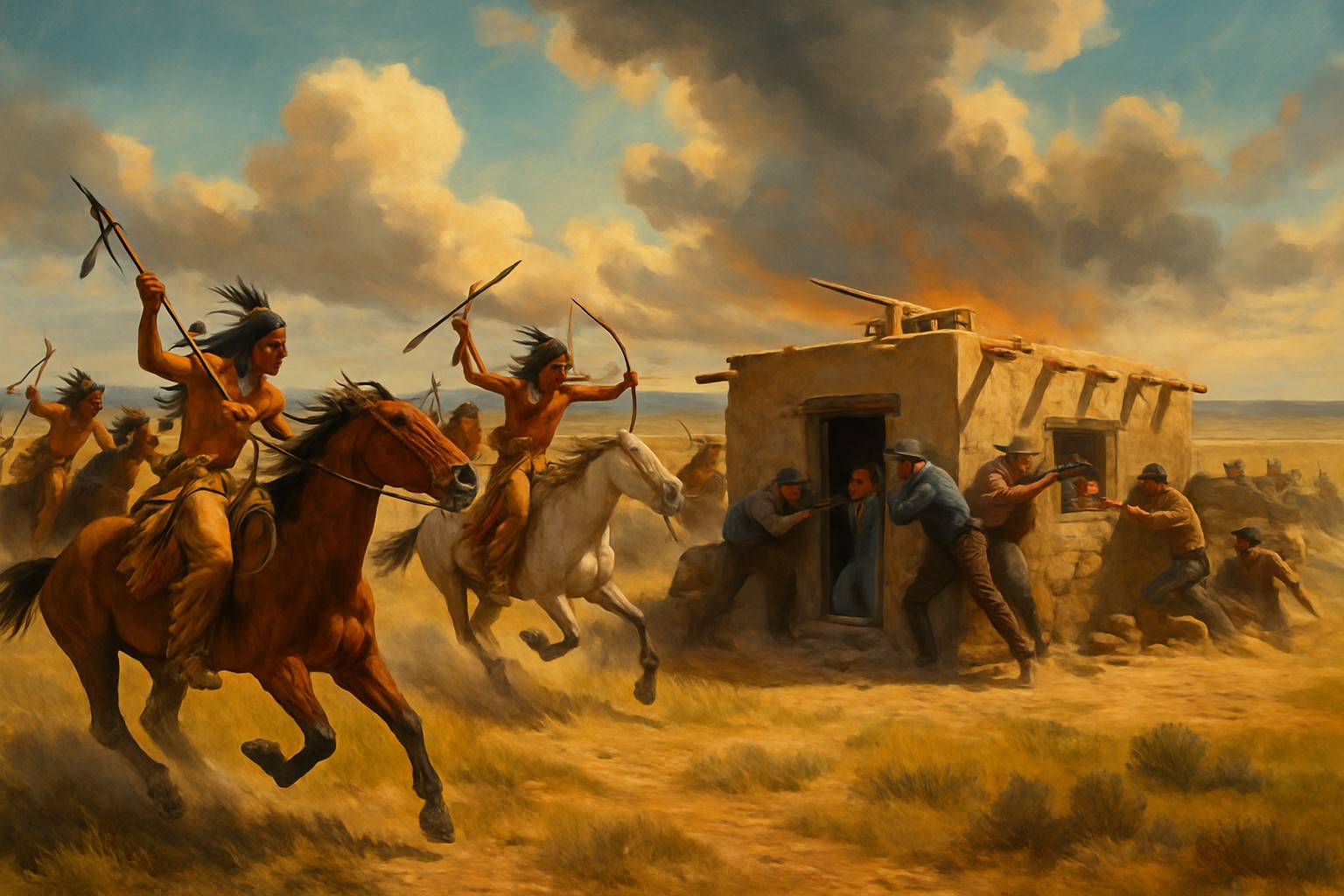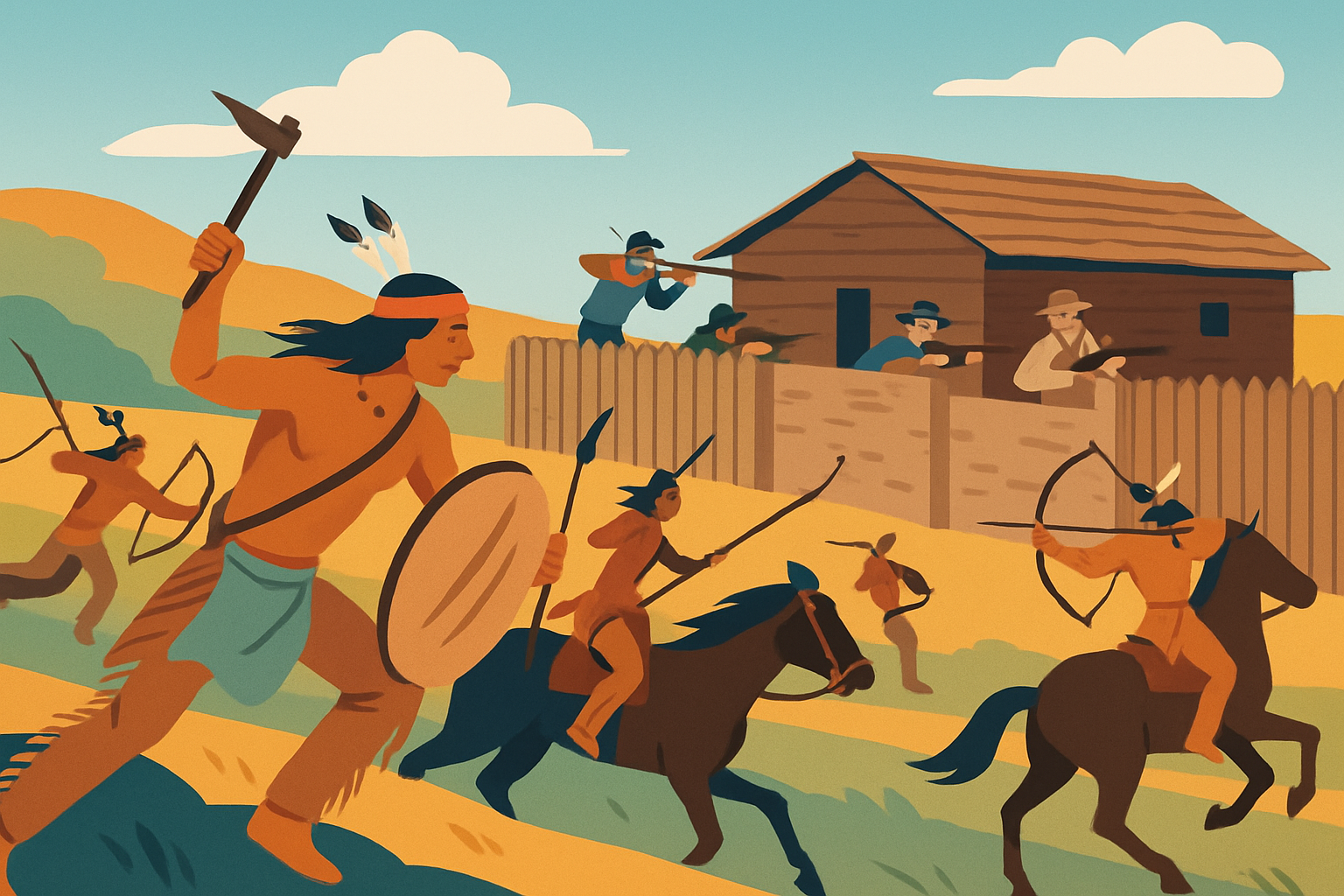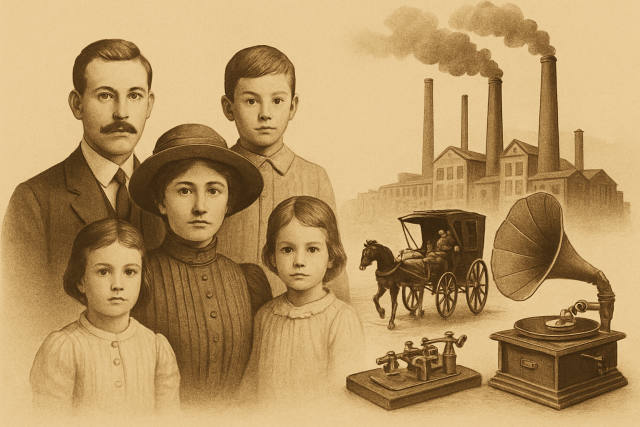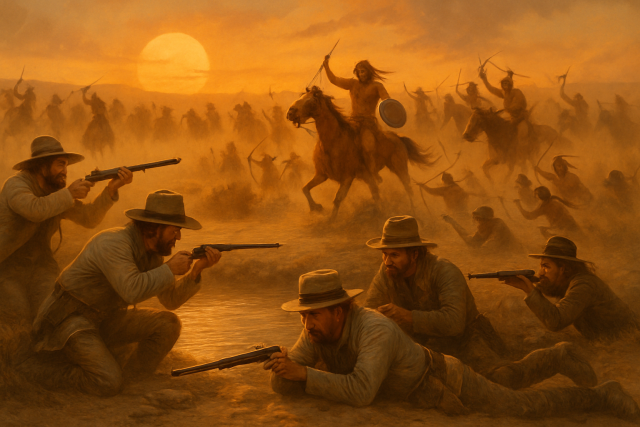What Adobe Walls Battle Tells Us About Western History

The Adobe Walls battle involved two key clashes in 1864 and 1874 and is a significant chapter in Western American history. These were not just ordinary military skirmishes because they highlight the complex relationships between Native American tribes and U.S. settlers as well as the growing buffalo trade economy that was changing the region. Looking closer at these events reveals the broader story of westward expansion, strong Native American resistance and the changing face of the American frontier.
Life in the American West before Adobe Walls
Picture this: vast open plains stretching as far as the eye can see, the kind of place where the horizon feels like it’s both a promise and a challenge. Life out here before Adobe Walls was rough and tumble, a daily dance with nature and unpredictability. People carved out their existence with grit and determination, often finding themselves caught between hope and hardship. It wasn’t just about survival; it was about staking a claim and telling a story that would echo through generations. So, let’s take a step back and get a genuine feel for what made the American West tick before Adobe Walls became a name on the map.
Before the battles at Adobe Walls, the American West was a tangled web of Native American tribes, settlers, and the U.S. government staking its territorial claims. The vast plains were not just empty space but the lifeblood for powerful tribes that depended on the buffalo for their way of life. At the same time, European-American settlers continued pushing westward attracted by new opportunities. They often found themselves caught in tense clashes with Indigenous peoples over land and resources.
- Native American tribes like the Comanche, Kiowa and Cheyenne had rich deep-rooted cultures that revolved around the buffalo and a nomadic way of life—truly intertwined with the rhythms of the land.
- As settlers and traders pushed westward they stepped into territories tangled with disputes that ramped up tension on all sides.
- The U.S. government aimed to control Native lands and often relied on treaties that were more broken or ignored than honored.
- The booming buffalo hide trade sparked massive hunting efforts that seriously threatened the heart of tribal existence.
- Trading posts like Adobe Walls served as bustling crossroads of commerce but also turned into flashpoints where different cultures clashed in ways that shaped the era.
What Actually Went Down at the Adobe Walls Battle
The Adobe Walls battles refer to two separate memorable skirmishes that went down near a humble trading post in the Texas Panhandle. The first in 1864 was a fierce showdown between Native American tribes and settlers trying to hold their ground. Fast forward to 1874 and things ramped up when a bigger coalition of tribes banded together to take on buffalo hunters encroaching on their territory.
The 1864 Battle of Adobe Walls was no small skirmish. It was a fierce raid carried out by Southern Plains tribes like the Kiowa and Comanche who targeted a trading post held by settlers and soldiers. This attack did not come out of nowhere because it was sparked by mounting incursions into tribal lands that pushed tensions to a boiling point. The clash resulted in casualties on both sides which added more fuel to an already blazing fire.
- In 1874 the Battle of Adobe Walls involved a group of Native American warriors led by some well-known leaders who launched an assault on a fortified trading post used by buffalo hunters. Even though the hunters were outnumbered they held their ground and fended off the attackers with deadly long-range rifles. This encounter stands out as a turning point because it signaled the waning of Native resistance and the relentless slaughter of the buffalo, marking a real turning of the tide if you will.

An artistic representation of the 1874 Battle of Adobe Walls, showing the clash between Native American warriors and buffalo hunters.
So, who were the key players in the Adobe Walls battle?
The Adobe Walls conflicts brought together a cast of characters each with their own agendas and viewpoints. Native American tribes like the Comanche and Kiowa were fiercely protective of their hunting grounds because those buffalo herds meant everything to them. Buffalo hunters wanted to cash in on the prized hides and saw an opportunity they couldn’t pass up. At the trading post, traders played their part as go-betweens navigating this tangled web of interests. The U.S. military kept a watchful eye on the whole situation.
- The Comanche tribe led by fierce war chiefs like Quanah Parker stood their ground when pushing back against encroachments. They didn’t back down easily, that’s for sure.
- The Kiowa tribe often teamed up with the Comanche and had strong leaders like Lone Wolf who helped keep their defense efforts coordinated. It was a partnership that worked better than you might expect.
- Buffalo hunters packing powerful rifles were driven not just by lucrative hides but also by the sheer necessity of surviving in tough conditions. It was a relentless grind out there.
- Traders at Adobe Walls managed a bustling trading post that became a key meeting point for both Native Americans and settlers alike. It was a real crossroads of cultures and commerce.
- The U.S. Army's support was somewhat limited but they still played a part in the larger campaigns aimed at controlling the Plains and trying to put a lid on Native resistance even if their impact sometimes felt patchy.
Why Did Adobe Walls Hold Such a Key Spot? Unpacking Their Role in History
Adobe Walls was far more than just a military skirmish. It became a striking emblem of resistance against the relentless tide of U.S. expansion and the gradual erosion of Native cultures.
Adobe Walls marked a turning point when Native American sovereignty came face-to-face with the relentless march of U.S. expansion, setting off profound shifts that rippled through both the culture and the very landscape of the Plains.
The battles at Adobe Walls are tightly woven into bigger stories like Manifest Destiny and the rapid disappearance of buffalo herds that Plains tribes relied on. They also involve the determined Native American efforts to hold onto their lands.
Clearing Up Some Common Misunderstandings About the Adobe Walls Battle
A lot of individuals tend to write off the Adobe Walls battles as mere skirmishes, missing out on the rich strategic and cultural layers that meant so much to the Native American tribes involved. Calling these fights simple overlooks the intricate ways the tribes stood their ground.
- Adobe Walls played a pivotal role in shaping the region's complex dynamics.
- Native American tribes were tied together by intricate alliances and thoughtful strategies.
- Buffalo hunters were driven by economic necessity and the quick demand for hides, which made their actions a bit more practical.
- The outcomes were anything but straightforward, with both sides tasting their fair share of setbacks and hard-won successes along the way.
- These battles were part of a much bigger conflict that rippled through policies and cultural shifts far beyond just this one event.
The Lasting Impact of Adobe Walls on Western History
It’s fascinating to see how the echoes of Adobe Walls still resonate through the corridors of Western history, shaping not just the land but the stories we tell about it. Often overlooked, this event left its mark in ways that ripple far beyond the dusty battlefield, reminding us that history isn’t just a sequence of dates but a tapestry woven with human grit and unexpected turns.
After the dust settled at Adobe Walls, skirmishes between Native tribes and settlers ramped up quite a bit. These heated encounters did not just stir the pot—they accelerated the loss of Native control over their lands, sparked harsher U.S. policies, and hastened the wipeout of buffalo herds that were absolutely important to Plains cultures.
| Category | Pre-Battle Situation | Post-Battle Situation |
|---|---|---|
| Native American Territorial Control | Held widespread control across the plains, really the heartland of their world | Significantly reduced, thanks to a mix of treaties and persistent military pressure |
| Buffalo Population Status | Large, thriving herds that were the lifeblood for many tribes | Nearly wiped out, delivering a harsh blow to Native survival and way of life |
| Settler Expansion Rates | Small but steadily inching forward, nothing too overwhelming at first | Rapid growth following military victories, almost like a floodgates opening |
| Military Actions | Occasional clashes, mostly to keep uneasy peace | Intensified campaigns aimed squarely at subduing tribes, ramping up the pressure |
What Adobe Walls Really Tells Us About Conflict and Change in the American West
The adobe walls battle really captures the tangled and often tough realities of the American West, a place where cultural clashes happened side by side with serious environmental damage. It’s a reminder that history is seldom black and white. The fierce determination of Native Americans showcases their incredible strength, while the relentless push of settlers and hunters marks a time of profound change—full of both hardship and adjustment.
“Adobe Walls really drives home just how deeply a people’s fate is intertwined with their land and resources, and how political ambitions can leave a lasting mark on both culture and the environment—sometimes in ways you wouldn’t see coming.”





